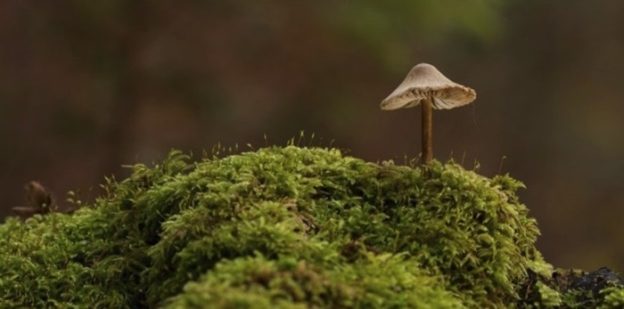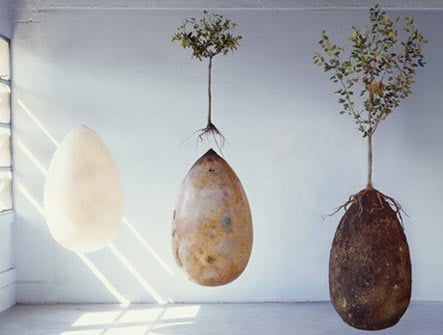4 Green Funeral Trends To Tap Into At Your Funeral Home
April 20th, 2023A topic gaining HUGE momentum amongst client families.
It seems like everyone is talking about mushroom burial suits and turning themselves into a tree when they die, these days.
As much as the buzz means some true and real change is needed in the funeral profession, there are also challenges to doing things differently than we’ve always done them.
So is it worth it to explore these trends?
Our short answer: yes.
But we’re not ones to just tell you what we think without telling you why we think like that.
So let’s dive into some of the risks traditional cremation & burial pose, and the compelling opportunities green funerals present:
The current state of traditional cremation
#1: Cremation is the most popular disposition option in the US, with 56.1% of people choosing it (source).
Cremation offers a more affordable alternative to traditional burial. However…
#2: Traditional cremation produces 1.74 billion pounds of CO2 emissions annually in the United States (source).
#3: Cremation releases toxic chemicals into the air and water such as mercury and creates byproducts of nitrogen oxide, dioxins, and particulates (source).
#4: Not only does cremation put the environment at risk, but its workers too. In fact, cremation workers have a higher than average incidence of COPD (Chronic obstructive pulmonary disease), respiratory diseases, and neurological disorders (source).
#5: One single cremation emits as much gas as a 500 mile car trip (source).
Turns out America’s favorite disposition method brings some major environmental concerns.
Facts about traditional burials
According to the Green Burial Council, annually, conventional burials in the United States use approximately…
- 4.3 million gallons of embalming fluid (827,060 gallons of which is formaldehyde, methanol, and benzene)
- 20 million board feet of hardwoods (including rainforest woods)
- 1.6 million tons of concrete
- 17,000 tons of copper and bronze
- and 64,500 tons of steel
In addition to all the bad news above, traditional burial workers, and embalmers in particular, have a 13% higher death rate, are at 8x higher risk for leukemia, and 3x higher risk for ALS (Amyotrophic Lateral Sclerosis) compared to the general population (sources 1, 2 & 3).
So we get it. Traditional cremation and burial are pretty unsustainable for the environment long term. But if changing gears seems unrealistic right now, is it really worth shifting your offerings? Let’s explore this very question below.
The demand for green funerals
Green funerals. Is there really a demand? Let’s look at the facts:
According to a survey from the National Funeral Directors Association (NFDA), 72% of cemeteries are reporting an increased demand for green burial practices.
According to another NFDA survey, around 61% of people would be interested in exploring “greener” funeral options because of their potential environmental benefits and cost savings.
If that’s not reason enough, let’s look at the revenue numbers. In 2021, the global green funerals market size was $571.54 million…and it’s expected to reach $1214.53 million revenue by 2030 (source).
So it seems there is an opportunity for helping out Mother Earth, and also tapping into a very sought out market.
Convinced to reconsider tapping into these green funeral trends?
Whether you’ve just lost someone or you’re a funeral home owner, let’s dive into these 4 green funeral trends:
The green alternatives to traditional burial & cremation
Green Funeral Trend #1: Simple Green Burial
What it is: According to the Green Burial Council, a green burial is:
A way of caring for the dead with minimal environmental impact that aids in the conservation of natural resources, reduction of carbon emissions, protection of worker health, and the restoration and/or preservation of habitat. Green burial necessitates the use of non-toxic and biodegradable materials, such as caskets, shrouds, and urns.
Some common types of green burial options:
- Simple Wooden Casket
- Cardboard Containers
- Woven Caskets
- Shrouds
- Tree pods
Although most of these options are pretty self explanatory, one worth mentioning that works a bit differently is called Capsula Mundi Tree Pods. Although still in concept phase, these tree pods make it possible for you to literally become a tree when you die.
All of these options offer families a way to respectfully bury their dead, but without all the chemicals, toxic waste and resources it takes to build a traditional coffin.
Interested in learning more about green burial options? Check out the thought leaders on the topic such as Green Burial Society and Green Burial Council to learn more about your options.
Interesting fact: At this point in time, nearly 54 percent of Americans are considering a green burial. There has been a large increase in the number of folks desiring green burial practices over the years.
Green Funeral Trend #2: Mushroom Burial Suits

What it is: According to this publication, a Mushroom Burial suit is:
A biodegradable burial shroud made from mushroom spores. The spores are designed to help decompose the body and filter toxins from it, so it does not contaminate surrounding plant life after a body is buried in it”.
Unless you’ve been hiding under a cave the last 7 years, you may have heard of the new green burial option everyone is talking about: the mushroom burial suit. The mushroom burial suit gained a lot of traction after Beverly Hills 90210 Star Luke Perry was buried in one.

How it works: According to industry leader, Eterneva…
A mushroom burial suit is made from organic cotton mixed with mushroom spores. They can be stored in a cool, dark, and dry place for years before use, so you don’t have to wait until your twilight years to purchase one.
Once a human body is resting in the ground in a mushroom burial suit, mushroom spores and other microorganisms begin to break down the body and turn the body into enzymes. These enzymes can then nourish the soil and help plant life thrive, leaving behind a fruitful legacy even after our loved one has passed.
If you haven’t heard of mushroom burial suits yet and are curious, check out the Ted Talk below:
Interesting fact: A mushroom burial suit costs between $1,000 and $3,500 less than a traditional or green burial plot or casket! Talk about a cooler, cheaper option!
Green Funeral Trend #3: Green Cremation
What it is: According to Green cremation is:
A gentle, eco-friendly alternative to flame-based cremation. Just like with traditional cremation, the body is reduced to ashes, which are then returned to the family. However, no flames are used during the Green Cremation process, making it the more natural choice.
Green cremation has several nicknames such as aquamation or resomation. We’re finding this type of cremation to be gaining a lot of traction since gas prices have spiked. What’s awesome about this option is that because there’s no heat involved, there is also no gas production involved either. Say hello to a smaller carbon footprint!
How it works: According to the Guardian…
With aquamation, or “alkaline hydrolysis”, the body of the deceased is immersed for three to four hours in a mixture of water and a strong alkali, such as potassium hydroxide, in a pressurized metal cylinder and heated to around 150C.
The process liquifies everything except for the bones, which are then dried in an oven and reduced to white dust, placed in an urn and handed to relatives.
Interesting fact: Green cremation uses “roughly 20% of the energy that flame-based cremation does”
Green Funeral Trend #4: Body Composting
What it is: According to Recompose, the company leading the way in human composting, it:
Uses a process called natural organic reduction to transform human remains into soil. This soil can then be used to regenerate the earth that supports us our whole lives.
How it works: The process of “recomposing” is pretty simple as explained by Recompose. The first step is to “lay the body in a vessel surrounded by wood chips, alfalfa, and straw. The vessel is closed and the transformation into soil begins”.
Next, “the body and plant material remain in the vessel for 30 days. Microbes power change on the molecular level, resulting in the formation of a nutrient-dense soil.”
When the body is complete in its recomposition process, it then turns into 1 cubic yard of “soil amendment” which then cures for 2-6 weeks. Lastly, the soil is returned to its rightful place in nature, helping to “ restore forests,sequester carbon, and nourish new life”.
To experience for yourself a visit to a human composting facility, check out this video:
Interesting fact: Between .84 and 1.4 metric tons of carbon dioxide will be saved each time someone chooses human composting over traditional burial.
Other Green Funeral Trends
While we only talked about some main green funeral trends that are gaining major momentum in the press and in the funeral profession, there are plenty of other beautiful green funeral options out there still gaining traction.
If you’re a green funeral company we’d love to hear from you! Or, if you have any green funeral trends to share, we’d love to hear about them in the comments below.





[…] Source link […]
Wow, this article blew my mind. I never heard of the tree or mushroom burial. Thank you for this information!
Hey Jasmine so glad this opened up possibilities for you! So cool 🙂 Thanks for reading
Hi guys I just stumbled across your blog and I love it! It’s really giving me insight into the funeral industry. I have been developing a collection of one-of-a-kind shrouds for green burials as I love the idea of personalizing the burial experience and wrapping a loved one in beautiful, sustainable cloth feels important to me – aesthetically and spiritually.
I would love to discuss the shroud market with you and get your opinion on my new venture. Please contact me if you have a few minutes!
Thanks,
Virginia
How did you forget Alkaline Hydrolysis disposal…!?!